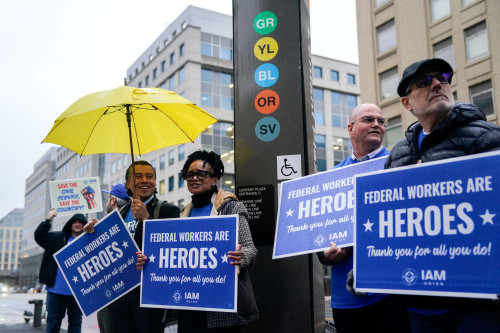By Alexandra Alper and Courtney Rozen
WASHINGTON (Reuters) -Roughly 154,000 federal employees have taken buyouts offered by the Trump administration this year, part of a broader push to slim the federal workforce, a person familiar with the matter said on Thursday.
The resignations, which amount to 6.7% of the civilian federal workforce, are the result of a program launched in January by billionaire Elon Musk, a former adviser to President Donald Trump, with an email titled “Fork in the Road.” The buyouts included staff at the Departments of Agriculture and Energy, and the Internal Revenue Service, among others.
Similar buyout offers were made in the following months at different agencies. The number of employees taking buyouts was first reported by the Washington Post.
In exchange for leaving, the administration agreed to pay the employees for several months after ceasing work, but all will be off federal payrolls by the end of the year, the person emphasized.
“In normal times, a 6.7% turnover rate would not be unusual for the federal government,” said Don Moynihan, a professor at the University of Michigan’s Ford School of Public Policy. “But these are not normal times. Along with the firing of probationary employees and other large-scale reductions in force, the deferred resignation program deeply cuts government capacity.”
The White House and the Office of Personnel Management did not immediately respond to requests for comment.
Attrition in the U.S. government’s civilian workforce was 5.9%, or 116,000 workers, in 2023, according to the Partnership for Public Service, a non-profit that compiles statistics on federal staff.
Employees opted into the buyout program amid plans from Trump and Musk to eliminate their jobs. Days after the administration closed its initial buyout offer, the administration fired tens of thousands of employees who were new to their jobs. Cabinet secretaries have promised more cuts in the coming months.
The 154,000 workers who took buyouts do not include staff who were fired or opted into other programs to slash the federal payrolls, such as an incentive program to retire early.
(Reporting by Alexandra Alper and Courtney RozenEditing by Rod Nickel)




